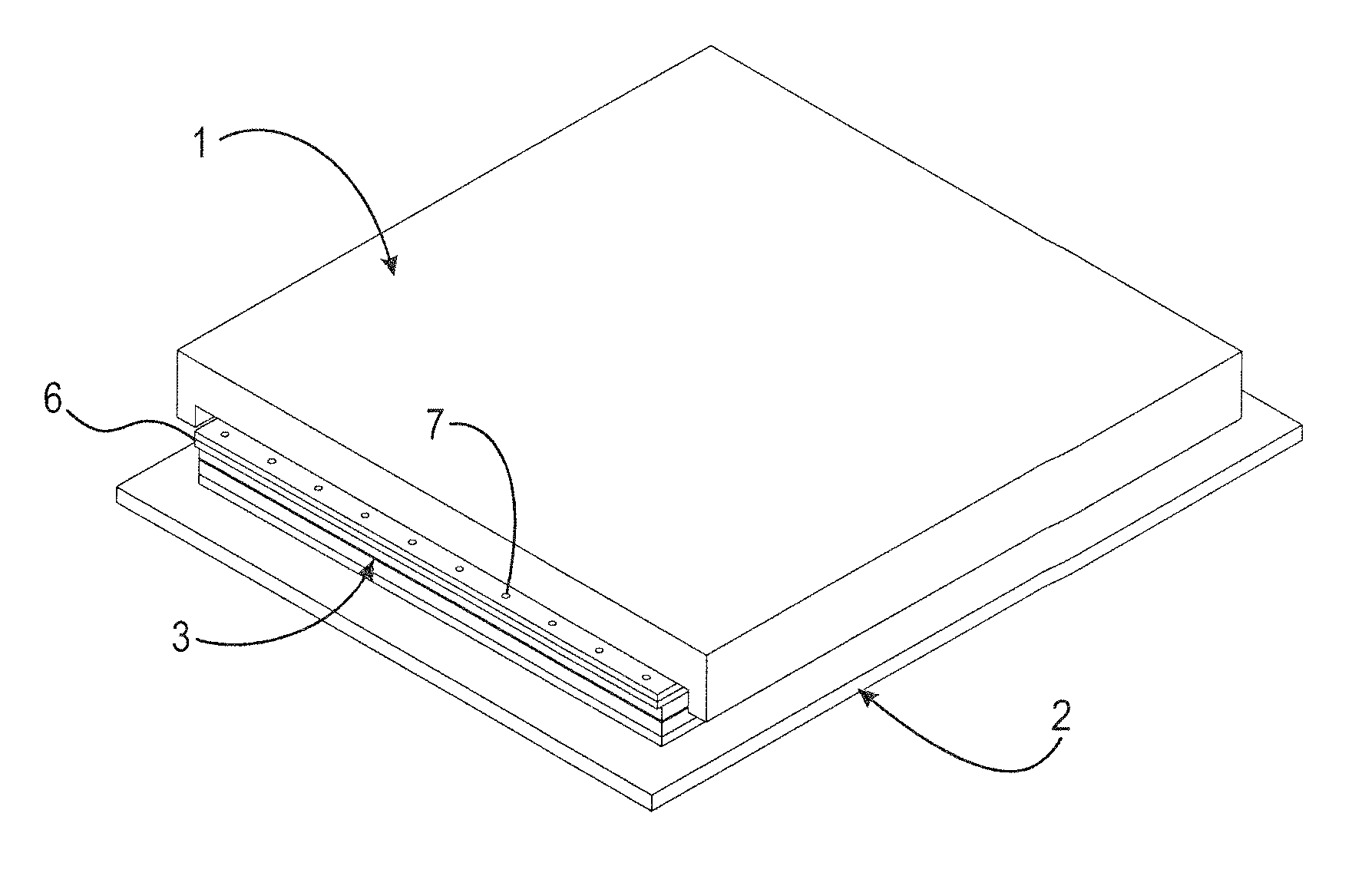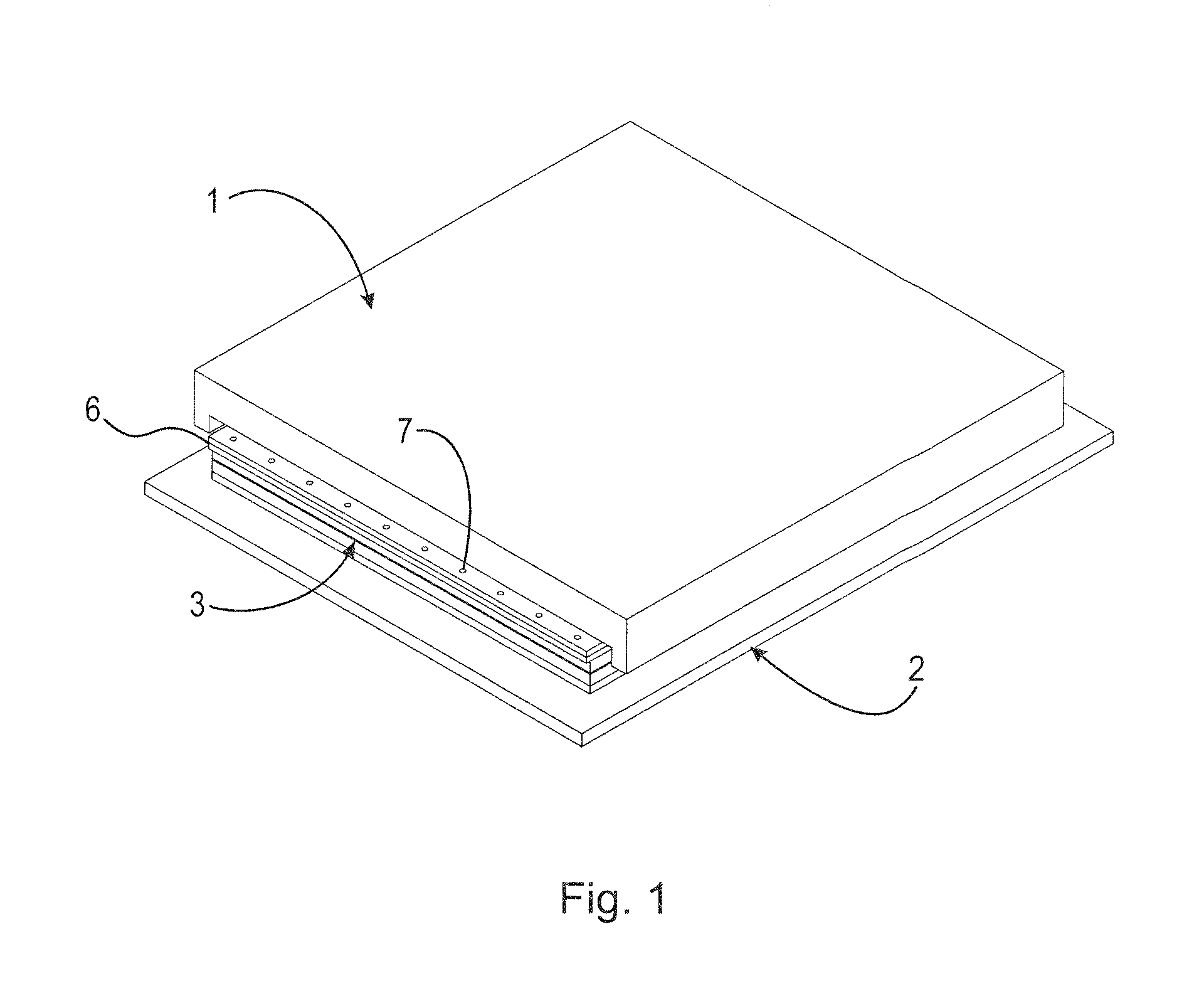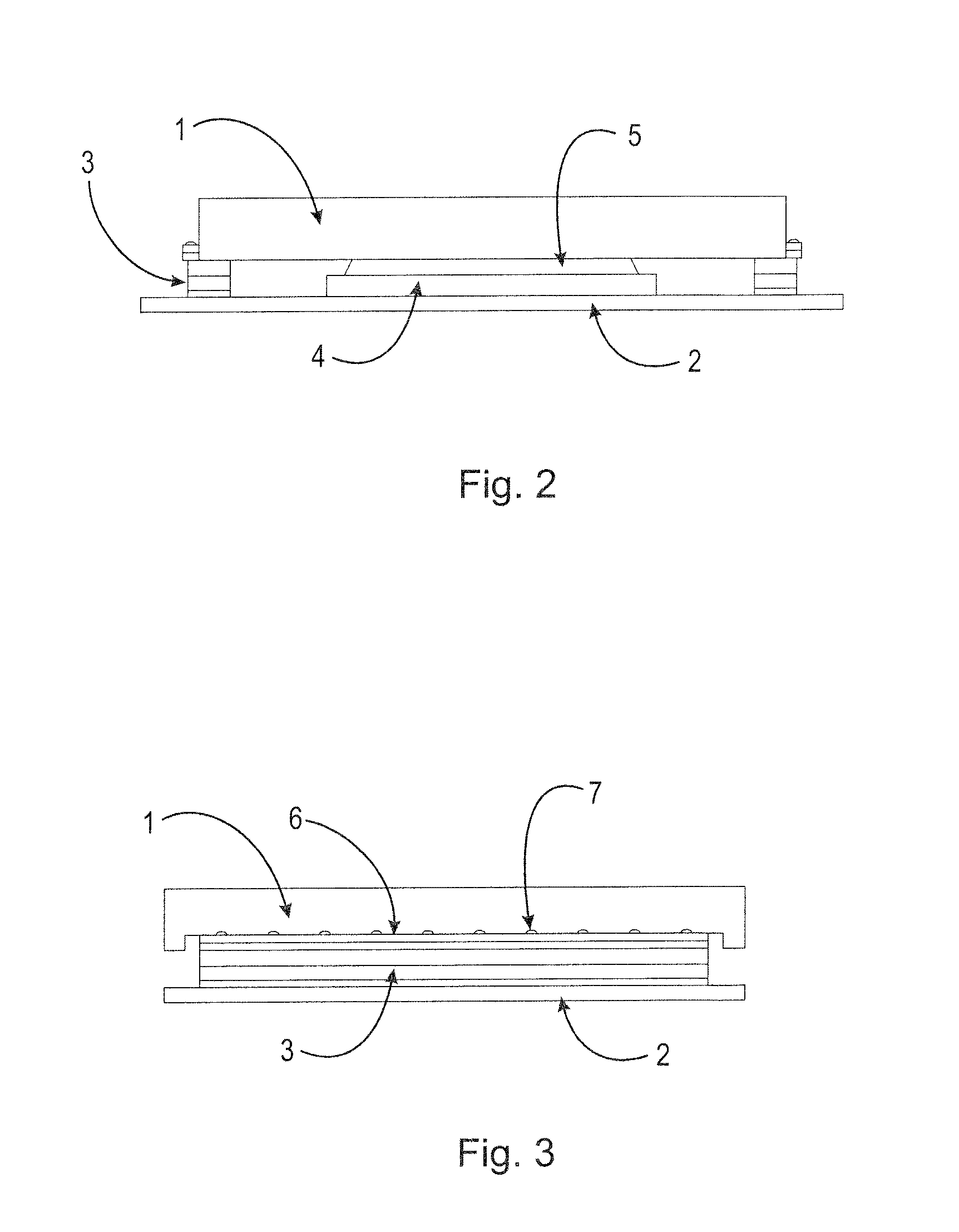Disc and spring isolation bearing
a technology of discs and springs, applied in the direction of bearing units, shock absorbers, shock proofing, etc., can solve the problems of bearings becoming too costly, springs becoming too large, space and cost required to fit springs, etc., to achieve high damping compound, reduce bearing footprint, and high friction damping
- Summary
- Abstract
- Description
- Claims
- Application Information
AI Technical Summary
Benefits of technology
Problems solved by technology
Method used
Image
Examples
Embodiment Construction
[0032]A description of example embodiments of the invention follows.
[0033]FIG. 1 is a schematic diagram showing an example embodiment of the seismic isolation bearing. The example embodiment includes a central sliding bearing core and shear springs positioned between a box housing (including an upper base plate) 1 and a lower (bottom) base plate 2. Typically the top of the box housing or base plate 1 is connected to a superstructure (the portion of a structure to be isolated), and the lower base plate 2 is connected to a substructure (e.g., foundation). Connections to the structure is not shown in the figures as the isolation bearing can be connected using standard methods. The shear spring(s) 3 provide a restoring force to the isolation bearing and, in some embodiments, may support a part of the vertical load. The shear spring(s) 3 may be connected to the box housing 1 using recessed bolt holes 7 that have been drilled through box connection plate(s) 6 and bolts. The box connection...
PUM
 Login to View More
Login to View More Abstract
Description
Claims
Application Information
 Login to View More
Login to View More - R&D
- Intellectual Property
- Life Sciences
- Materials
- Tech Scout
- Unparalleled Data Quality
- Higher Quality Content
- 60% Fewer Hallucinations
Browse by: Latest US Patents, China's latest patents, Technical Efficacy Thesaurus, Application Domain, Technology Topic, Popular Technical Reports.
© 2025 PatSnap. All rights reserved.Legal|Privacy policy|Modern Slavery Act Transparency Statement|Sitemap|About US| Contact US: help@patsnap.com



